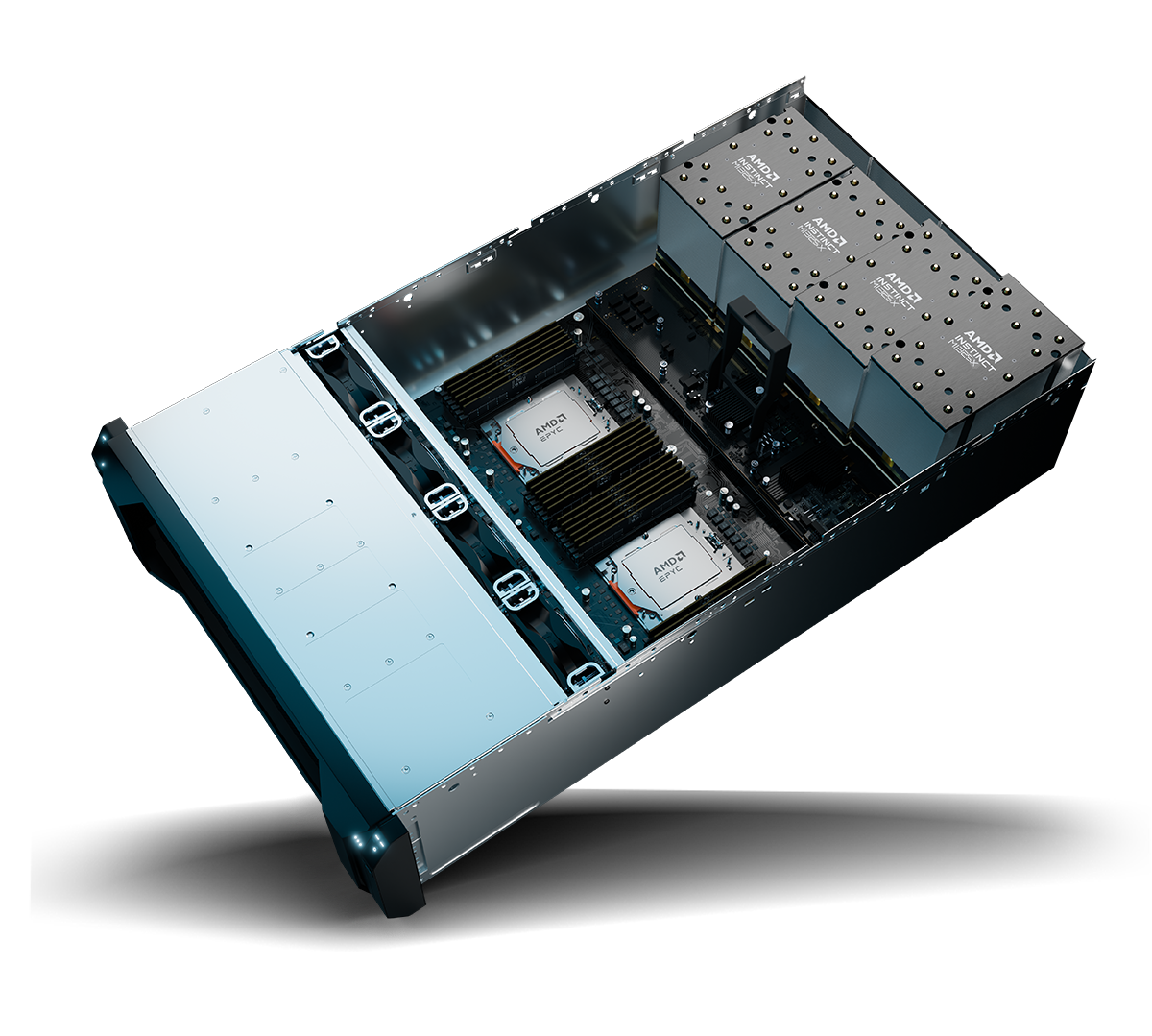Building Large Language Models with the power of AMD
TurkuNLP scaled to 192 nodes on the LUMI supercomputer, powered by AMD EPYC™ CPUs and AMD Instinct™ GPUs, to build Large Language Models for Finnish.

High performance servers are foundational to Enterprise AI. With GPUs in your datacenter, choosing the right host CPU is critical. AMD EPYC as host to your GPU investment enables impressive performance for your AI Inference and training for large model workloads.

GPU accelerators have become the workhorse for modern AI, excelling in training large, complex models and supporting efficient real-time inference at scale. However, maximizing the potential of your GPU investment requires a powerful CPU partner.
GPUs are the right tool for many AI workloads.
Combining the power of GPUs with the right CPU can significantly enhance AI efficiency for certain workloads. Look for these key CPU features:

High frequency AMD EPYC 9005 Series processors are an ideal choice for unlocking the true potential of your GPUs for large AI workloads. As host CPU they help ensure the GPUs have the right data at the right time to continue processing is critical to achieving the best AI workload throughput and system efficiency. Their high core frequency and large memory capacity are key factors that make AMD EPYC high frequency processors stand out. To understand how these key factors deliver increased GPU throughput, read the article.

GPU accelerator-based solutions fueled by AMD EPYC CPUs power many of the world's fastest supercomputers and cloud instances, offering enterprises a proven platform for optimizing data-driven workloads and achieving groundbreaking results in AI.

CPUs play a crucial role in orchestrating and synchronizing data transfers between GPUs, handling kernel launch overheads, and managing data preparation. This "conductor" function helps GPUs operate at peak efficiency.
Many AI workloads benefit from high CPU clock speeds to enhance GPU performance by streamlining data processing, transfer, and concurrent execution, fueling GPU efficiency. The EPYC 9575F is purpose-built to be a high performing AI host-node processor running at speeds up to 5GHz.
Processors like 5th Gen AMD EPYC that combine high performance, low power consumption, efficient data handling, and effective power management capabilities enable your AI infrastructure to operate at peak performance while optimizing energy consumption and cost.
AMD EPYC processors power energy-efficient servers, delivering exceptional performance and helping reduce energy costs. Deploy them with confidence to create energy-efficient solutions and help optimize your AI journey.
In AMD EPYC 9005 Series processors AMD Infinity Power Management offers excellent default performance and allows fine-tuning for workload-specific behavior.

Choose from several certified or validated GPU-accelerated solutions hosted by AMD EPYC CPUs to supercharge your AI workloads.
Using other GPUs? Ask for AMD EPYC CPU powered solutions available from leading platform solution providers including Asus, Dell, Gigabyte, HPE, Lenovo, and Supermicro.
Ask for instances combining AMD EPYC CPU with GPUs for AI/ML workloads from major cloud providers including AWS, Azure, Google, IBM Cloud, and OCI.
